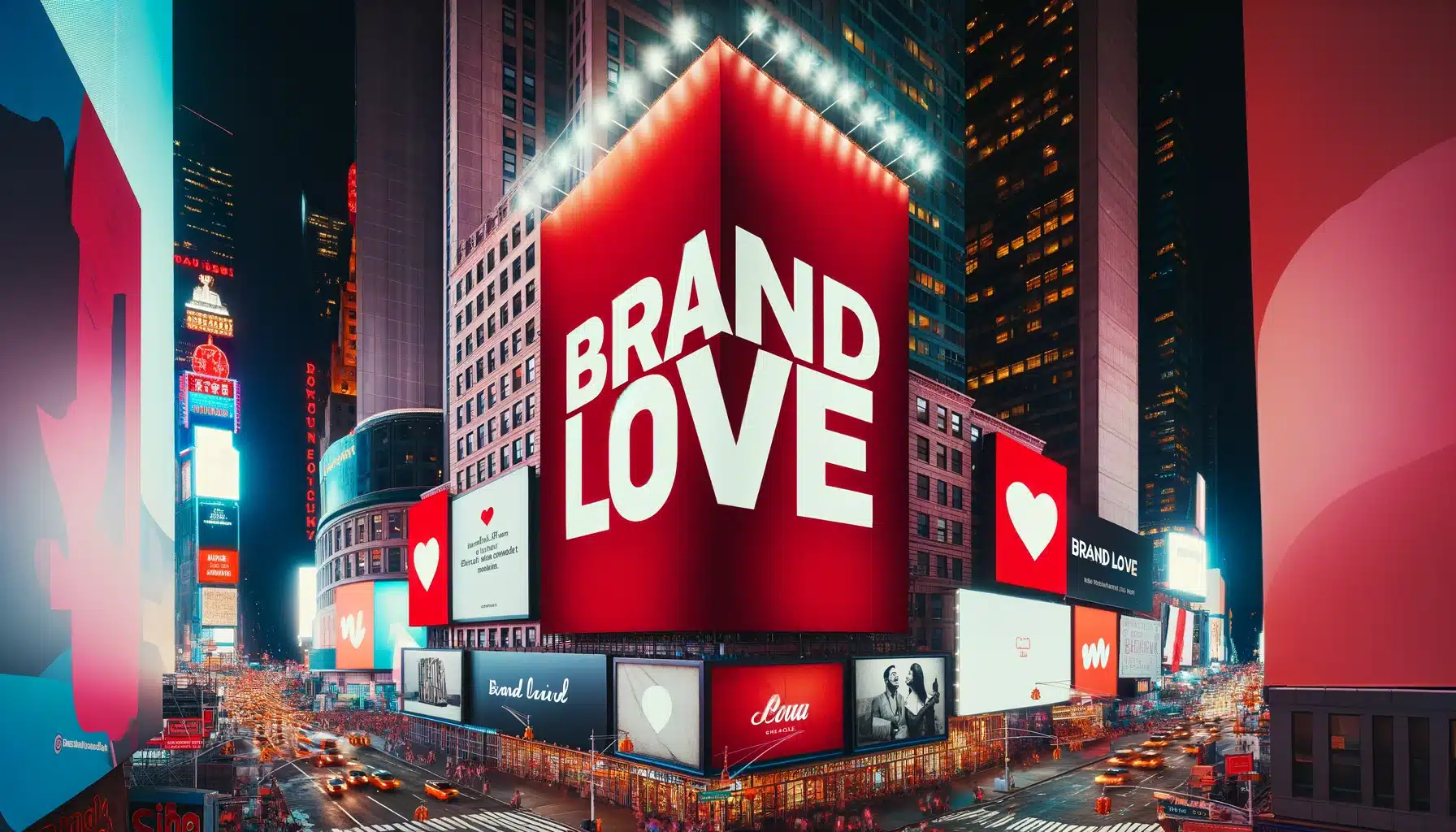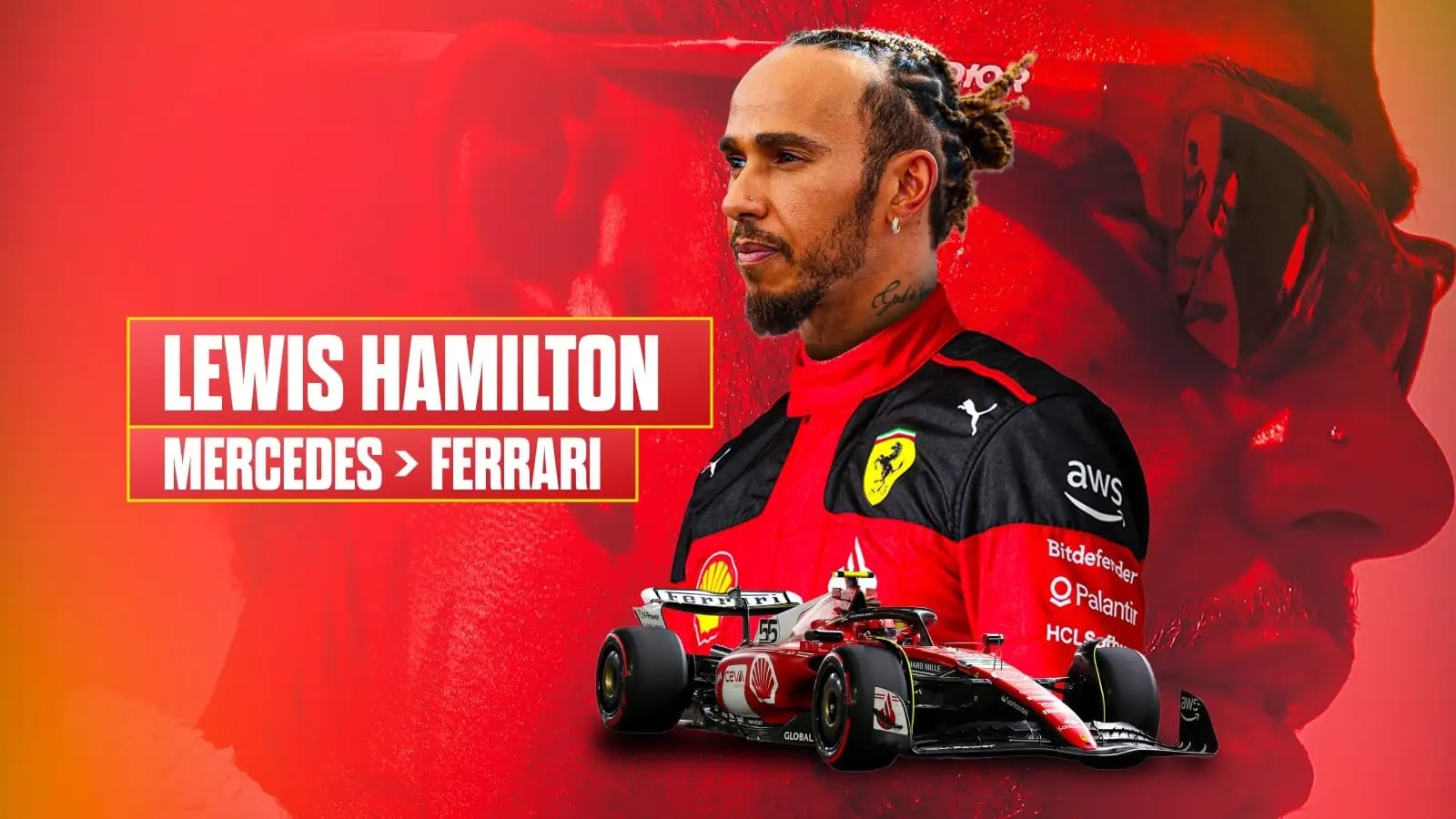Ferrari is one of the most desired luxury car brands in the world. To Italians worldwide, the Ferrari brand screams their passion for the Italian culture. This year’s big news is that Lewis Hamilton, the 7-time Formula 1 champion, will move to the Ferrari team in 2025.
While other car brands drive their valuation by selling more cars, Ferrari makes their money by selling fewer cars. This is a great case study for marketers who need to build a desire for their brand. With all the pent-up desires, Ferrari uses scarcity to keep prices high and uses that desire to sell nearly as much merchandise as they do cars. Those consumers buying the merchandising dream of one day buying a Ferrari.
Ferrari spends on Advertising per year = $0.
Ferrari spends on F1 per year = $500,000,000.

Ferrari Case Study - Table of Contents
The Ferrari brand
Ferrari spends nothing on advertising, everything on the F1 race.
They put all their money into the Scuderia Ferrari F1 racing team, knowing that a win in front 500 million viewers each week fuels that desire for the brand. While Ferrari was the dominant winning team from 2000-2007, most recently they have struggled on the track behind Mercedes. Scuderia is Italian for a stable reserved for racing horses, closely linked the prancing horse in the Ferrari logo. Ferrari supplies engines for 4 of the F1 race teams.
No matter what part of the world, whether in Australia, Britain or Brazil, it is the screaming Ferrari fans with their faces painted red, who are the most passionate among the crowd. The passion of these fans will continue to fuel Ferrari on the race track to catch up with Mercedes. They have to. It is crucial to the brand’s success.

Ferrari brand positioning
Ferrari stands for Italian passion.
The brand idea is “Italian Excellence that makes the world dream.” They clearly understand the brand’s role in tapping into the pride of Italians around the world. Most fans of Ferrari will never own a car. It will be a lifelong dream. Instead, these brand fans will buy tee shirts, hats, sunglasses, key chains and anything that projects their association with the brand. The branded merchandise accounts for $1.5 – $2 billion in sales each year. That’s a significant contribution to Ferrari’s $4 – $5 billion in revenue each year.
A lot of this merchandise is anything but cheap.
A model of the coveted Ferrari F14T at 1:8 scale costs $5,400. Ferrari sunglasses retail for more than $200. It all adds up and helps to make Ferrari one of the most valuable automotive companies in the world. Moreover, there is now a Ferrari theme park in UAE.

Ferrari limits production on cars.
Since back in the 1990s, Ferrari has found tremendous success in using the pent-up desire to fuel their success. While everyone should want a Ferrari, not everyone should have one. This keeps the price high.
By focusing on extraordinary vehicle design and exclusivity, Ferrari is able to sell luxury cars with high-profit margins. Increasing profitability with high margins has been a key driver of revenue growth. They reported EBITDA margins of 25%, which is quite high as compared to other luxury car manufacturers as well as the industry average.
While they have allowed the car volumes to inch up, and it appears they are finally releasing their SUV at a $350,000 price point.
Ferrari signs Lewis Hamilton for 2025
The announcement of Lewis Hamilton’s move to Ferrari for the 2025 season, confirmed on a Thursday that shook the Formula 1 world, has reverberated far beyond the race tracks, notably impacting the financial markets. Ferrari, already one of the most prestigious names in motorsport, saw its stock surge by 9% in a single day, a testament to Hamilton’s immense brand value to the Scuderia.
This move signifies a major shift in the F1 driver lineup and underscores top-tier athletes’ economic influence and decisions on the business entities they associate with.

Ferarri stock up 9%
The financial uplift for Ferrari was further bolstered by the company’s impressive performance in the fourth quarter, as reported by Josh Lipton and Julie Hyman. Ferrari outpaced earnings expectations, posting over €1 billion in net profit, a remarkable achievement that underscores the brand’s resilience and growth potential. This 11% year-over-year revenue increase is indicative of Ferrari’s strong market position and its ability to deliver exceptional value to its shareholders.
Hamilton’s transition to Ferrari is seen not just as a change of scenery for the seven-time World Champion but as a strategic alignment with one of the most iconic brands in the automotive and sports world. Ferrari’s allure is unmatched in motorsport, with a legacy of performance, innovation, and Italian craftsmanship spanning decades. With his global appeal and record-breaking achievements, Hamilton aligns perfectly with Ferrari’s ethos of excellence and prestige.
This move is particularly significant for Ferrari as it looks to capitalize on Hamilton’s global fanbase and marketing appeal.
The anticipation of Hamilton driving in Ferrari red has excited fans and investors, as evidenced by the stock’s surge. The association of such a high-profile athlete with Ferrari enhances the brand’s visibility and reinforces its status as a symbol of luxury, performance, and technological prowess.
Ferrari + Hamilton = Marketing Gold
For Ferrari, the partnership with Hamilton extends beyond the race track. It opens up new avenues for marketing, merchandise sales, and brand partnerships, leveraging Hamilton’s influence in fashion, environmental advocacy, and social issues. This broadens Ferrari’s appeal, attracting not only motorsport enthusiasts but also new fans and consumers who identify with Hamilton’s values and endeavors outside of racing.
The future looks bright
As Ferrari celebrates its record net profit and looks to the future with one of the most successful drivers in F1 history, the marriage of Hamilton’s competitive spirit and Ferrari’s legendary status promises to be a powerful engine driving the brand to new heights

Red Bull case study
The courageous pathway to becoming a beloved brand
As a leading energy drink brand, Red Bull has become a household name across the globe. The brand is known for its high energy and exciting marketing campaigns. As well, Red Bull takes an innovative approach to product development. In this post, we will take an in-depth look at Red Bull’s marketing execution, exploring how the brand has become so successful. I hope you can learn from its daring approach and boost your own business. When you think of energy drinks, Red Bull is probably one of the first brands that come to mind.

Our Red Bull case study focuses on Red Bull advertising, extreme sports, distribution, productive and innovation. They take chances most of us would be too afraid to do. This courage helps capture the attention of younger audience.
Ferrari brand identity
The purpose behind the brand is clear
“We build cars, symbols of Italian excellence the world over, and we do so to win on both road and track. Unique creations that fuel the Prancing Horse legend and generate a “World of Dreams and Emotions”.
Very motivating to consumers in the marketplace, as well as internally, for everyone who works on the Ferrari brand.
Luca Cordero di Montezemolo, the former Chairman of Ferrari talked about the link between the history and traditions. “I want to maintain the link with the past, with the tradition and with the history but don’t want to be in the prison of the history. I want to be in the prison of the future.”
Ferrari brand strategy
The two issues in the future:
Building out the marketing plan, these are their two biggest key issues that help frame their strategy statements for the future.
- How will they improve their performance on the F1 track, to beat Mercedes, and keep the passion of their fans alive?
- With changing regulations on fuel emissions, around the world, how can the brand advance on Hybrid technology so that it can maintain its standing as a modern car?
It looks like as we head into the F1 season, there will be pressure for the Ferrari brand to step up their performance on the track. All those fans with their faces painted red want victories.
For marketers, who are your most motivated consumers? And, how can you turn them into passionate brand fans?
Tesla Case Study
If you like cars, you will enjoy our Tesla Case Study. Tesla has used the hype-style marketing style of Apple. Elon Musk has borrowed from the Steve Jobs playbook. He uses event-style marketing, an outspoken visionary voice, and he is continually challenging the status quo. Yes, he goes offside on Twitter all the time, but we might be glad that we never saw Steve Jobs tweet.
To illustrate, click on our Brand Idea map for the Tesla brand.
We use our Brand Idea Map tool to show how Tesla stretches their summarized brand idea of “designed for our future” across five different consumer touchpoints. Brand Promise. Brand Story. Innovation. Purchase Moment. Customer Experience. The Brand Idea Map ensures all are lined up to consistently deliver the same Tesla brand.
Brand Management Mini MBA
Invest in your future. If you are an ambitious marketer, looking to solidify your marketing skills, our Brand Management Mini MBA will teach you about strategic thinking, brand positioning, brand plans, advertising decisions, and marketing analytics.
Have a look at our brochure on our Mini MBA program
Use > to move through the brochure or x to see the full screen.
You get 36 videos and we provide key chapters from our Beloved Brands Playbook, and a Brand Management Workbook with exercises to try in real-time. You will earn a certificate you can use on your resume or LinkedIn profile.









